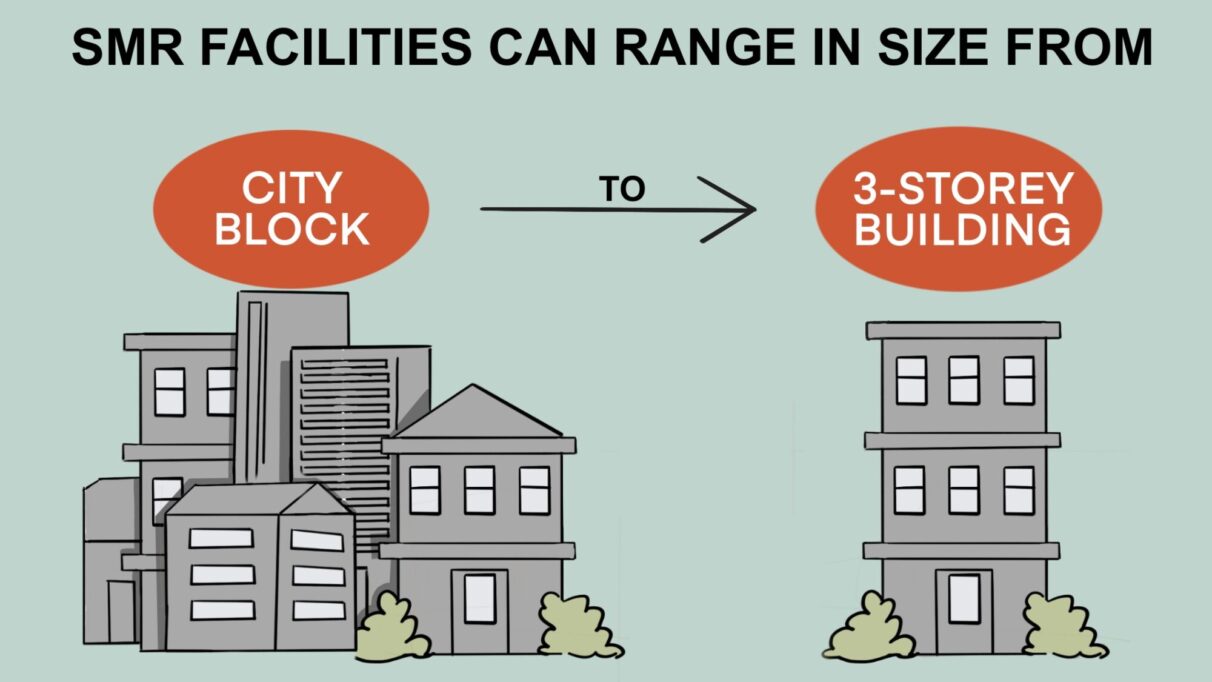N.S., Ontario to collaborate on new nuclear technology
What are small modular nuclear reactors, and why is Canada spending $2 billion on them?

caption
Power lines in Halifax are contrasted against a partly cloudy sky. Small nuclear generators can produce up to 300,000 megawatts of power. Nova Scotia has agreed to look into small modular nuclear reactors with the province of Ontario.Last month, Nova Scotia Premier Tim Houston signed a memorandum of understanding with Ontario Energy and Mines Minister Stephen Lecce to collaborate in the development of small modular reactors (SMRs).
Then, Prime Minister Mark Carney’s Nov. 5 federal budget dedicated $2 billion to construction of SMRs at the Darlington nuclear site in Ontario.
Proponents say they are cheaper than traditional reactors and since they produce less greenhouse gases than oil, gas or coal plants, they fit into government green energy strategies.
Their detractors say the technology is still new and there are existing green technologies the province can take advantage of.
So, what are small modular nuclear reactors, and why might Canada develop them?
‘A lot of promise’
According to Ali Siddiqui, who runs the advanced reactors directorate at Canada Nuclear Laboratories, a leading Canadian nuclear research organization, SMRs are a “new generation of smaller and hopefully more cost-efficient nuclear reactors that are showing a lot of promise.”
“They are a new generation of smaller and hopefully more cost-efficient reactors that are showing a lot of promise.”
Ali Siddiqui
There are a wide range of designs and technologies for SMRs — they are smaller than full-size reactors but vary in size greatly, from a three-storey building to the size of a city block. They can generate as much as 300 megawatts of power (enough to power 300,000 homes) or be just large enough to power a single facility.
Conventional nuclear reactors are constantly monitored by nuclear operators and have a plethora of safety systems. Because SMRs are smaller and have less heat in their cores, says Siddiqui, they can have built-in safety mechanisms that do not require constant human intervention.
There are no SMRs currently operational in a G7 country, but the first of four reactors planned for the Darlington Nuclear Generating Station in Ontario is under construction. Another is in development in Point Lepreau, New Brunswick, at the site of a conventional nuclear generating station.
These SMRs use a form of low-enriched uranium as a fuel source, while conventional reactors in Canada use uranium in its natural state.

caption
Small modular reactors vary in size and produce energy.Why is Canada looking into SMRs?
Canada has 22 nuclear reactors across five operational nuclear facilities in Ontario, New Brunswick and Quebec, which provide 15 per cent of the country’s energy. Federal and provincial governments across the country are looking to expand nuclear technology to reduce carbon emissions and meet the federal government’s 2030 greenhouse gas reduction goal.
Canada is also one of the largest producers of uranium in the world. In March 2025, Nova Scotia lifted a moratorium on uranium exploration in the province.
November’s federal budget earmarked $2 billion to fund four modular reactors at the Darlington site.
“The project has the potential to position Canada as a global leader in the deployment of SMR technology for use across the country and worldwide,” the budget read.
Previous to the federal budget announcement, Nova Scotia — while not directly involved in SMR research — signed an MOU with Ontario to collaborate on research and share knowledge about technical developments, supply chains and waste management related to SMRs.
“Small modular reactors aren’t part of Nova Scotia’s near- or medium-term energy plan … At this stage, we’ll be learning from and standing with Ontario as they build Canada’s first operational small modular reactors,” read a statement to The Signal from the Department of Energy.
“We must continue to explore the full range of clean energy solutions.”
How does nuclear energy work?
Nuclear reactors produce energy through fission or splitting atoms apart, Siddiqui explains. Fuel (in Canada, usually uranium) is inserted into the reactor, where neutrons split the uranium atoms apart, causing a chain reaction that generates heat.
A coolant (usually modified water) cools down the reaction, which produces high-pressure steam, which is then used to turn a turbine to generate electricity.
Many places can’t accommodate full-sized reactors because of a lack of space, small populations and lack of grid capacity. SMRs offer a smaller, cheaper way to build reactors so they can be hopefully adopted more broadly. Their modular design and construction also means that reactors can be easily added to a location or removed based on energy needs.
What are the disadvantages?
Some organizations are concerned about increasing SMR capacity. Badia Nehme, energy co-ordinator at the Ecology Action Centre, a Nova Scotia environmental non-profit organization, says SMR technology is still too new to assess.
In the meantime, she says, other renewable sources of energy like wind and solar already exist.
“We have options available to us already to achieve a grid that is sustainable, reliable, and affordable,” says Nehme.
“We don’t need to be relying on a lot of these heavy industrial business-as-usual extraction projects that only really seek to make money for corporations.”
She is also concerned about extraction and treatment of uranium. Uranium, like oil, is a finite resource: “One day we will eventually run out of uranium and that will be a problem for future generations as well.”
Small modular reactors use enriched uranium, which Canada currently doesn’t produce. But the country does have plentiful uranium resources, meaning it can easily ally with others like the United States or United Kingdom for supplies, says Siddiqui.


Leave a Reply